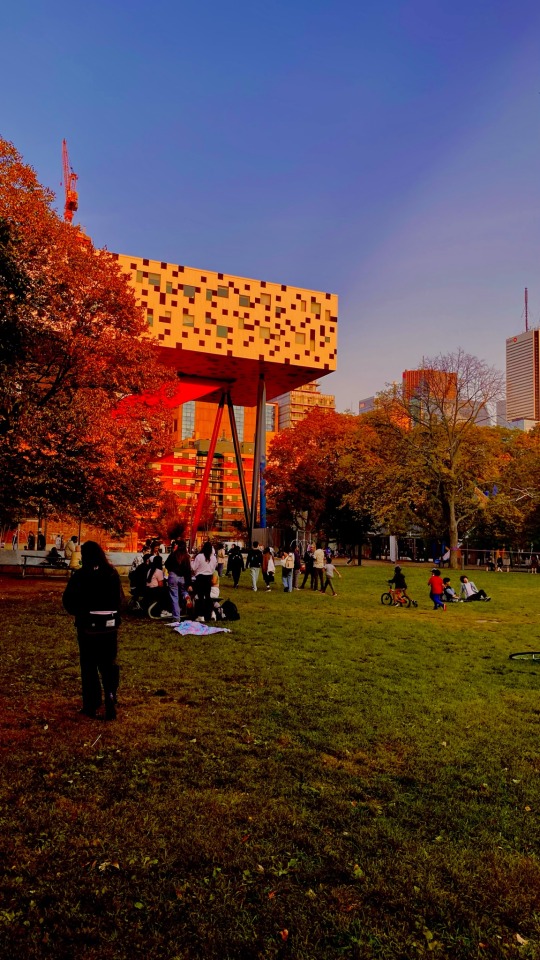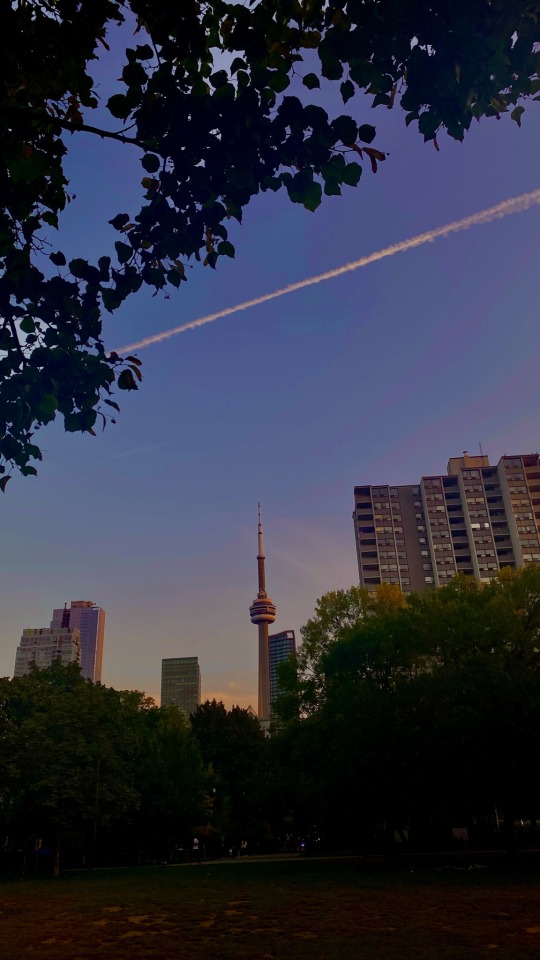#ocadu
Explore tagged Tumblr posts
Text
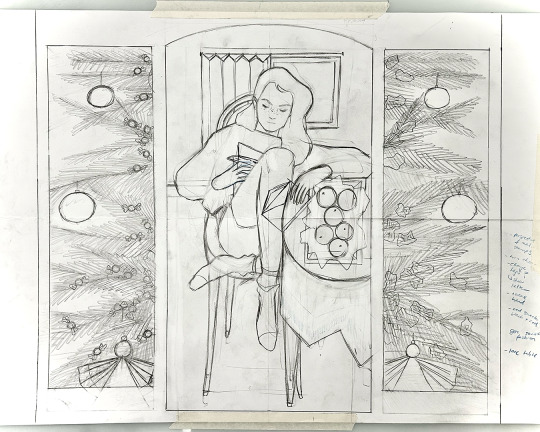
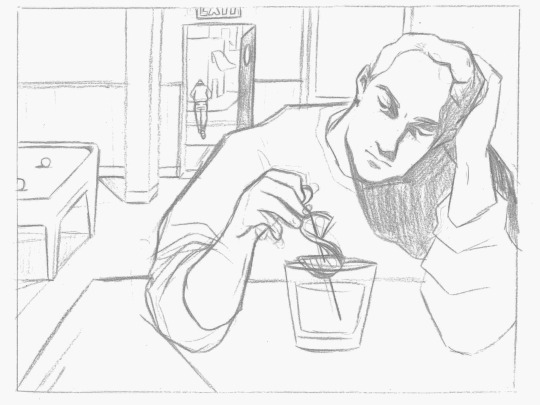
some preliminary sketches i liked in the thesis process so far
12 notes
·
View notes
Text

My first illustration from second year! For Illustration 1, we were given the word ‘Fall’ and asked to create an image with any interpretation.
I call this piece “The Fall of Summer”, I personified the fall and summer seasons as characters, they are fighting for control of the environment with Fall/Autumn triumphing over Summer, to represent the transition of seasons, it’s sort of a double meaning too, ‘fall’ as the action and as the season, I love wordplay!
Which character is your favourite? Do you prefer Autumn or Summer? 🍁☀️
#my art#art#design#illustration#drawing#painting#watercolour#fall#summer#university art#Illustration 1#Fall 2021#ocadu
7 notes
·
View notes
Text

I just want to go home and work on this :(
6 notes
·
View notes
Text
Teta Alit
Teta Alit visually translates phrases from the Arabic/Lebanese language into literal scenarios to bring humour, lighthearted connection, and understanding between diverse backgrounds. This Series will play with language and show how beautiful, poetic, and funny the Arabic language is.
The title in english means, "My Grandmother Said". "Teta" Is My Grandmother in Lebanese, and the word "Alit" can be translated to the word said.
This series was part of my undergrad thesis at OCAD U.
Ever wondered what some expressions or proverbs your grandparents, or even parents, say sometimes means? Or while visiting a foreign country you hear a strange saying and you wonder what it means? Sometimes they even translate funny…
Here are 10 Lebanese and Arabic proverbs that could have a different meaning that what they sound.
1- El Ered Bi 3ein Emmo Ghazel - القرد في عين أمه غزال

This translates to “The monkey is a deer in his mother’s eyes”.
It’s an Egyptian expression that means that the mother thinks that their child is beautiful and perfect when in reality they are not.
2- Kalemak 3assal 3ala Albeh - كلامك عسل على قلبي

This translates to “Your words are honey on my heart"
The feminine version would be “kalemik 3assal 3a albeh”. You just have to replace the -ak with -ik depending on who you talk to. -ak is masculine and -ik is feminine
This expression is the perfect response for when a special someone says something especially sweet. This can also be a used for flirting 😉.
3- Baselto Ma7rou2a - بصلة محروقة
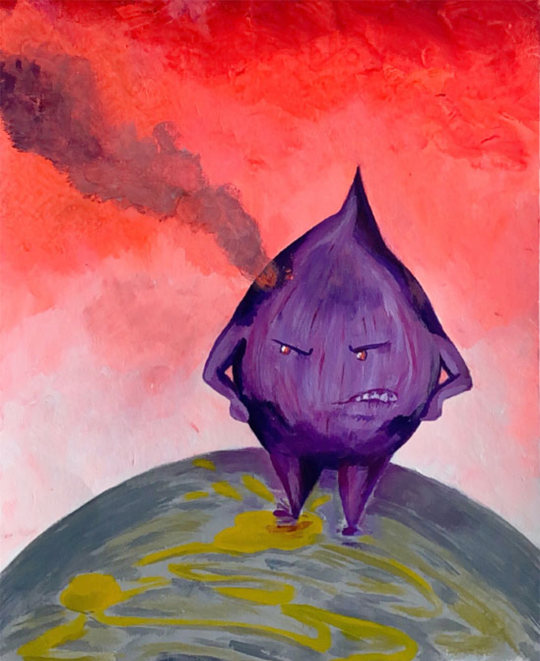
This translates to “Your onion is burning”
the feminine version would be “Baselta ma7rou2a”. -o is masculine -a is feminine, changes depending on who you talk to.
you can also use “Baseltak ma7rou2a” or “Baseltik ma7rou2a” if you are talking directly to the person. The previous versions are when you are talking about someone.
*see previous proverb for -ik and -ak explanation.
This proverb means that he/she is very impatient.
4- El Tekrar Fi Ta3lim El Hmar - التّكرار في تعلّم الحمار
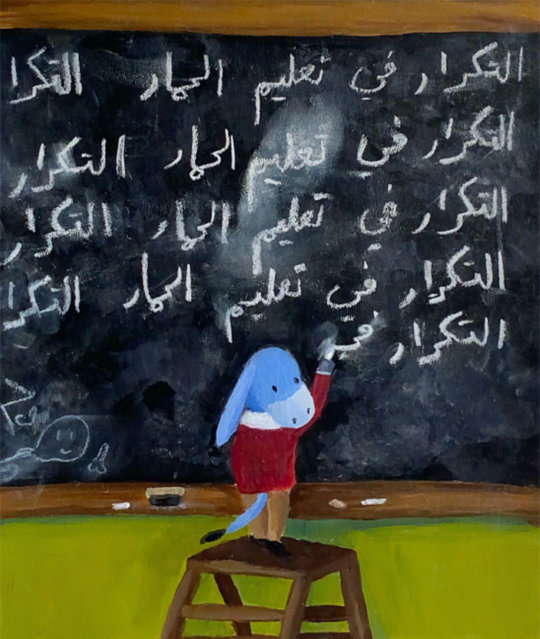
This translates to “repetition teaches a donkey”.
it means practice makes perfect.
5- Tanjra w le2it ghataha - طنجرا و لاقيت غطها

This translates to “A pot found it’s cover”
This is said of two people who click.
Personal anecdote: It is something I felt when I met my best friend. It felt cosmic, it felt right. It felt like I, to take the words of the proverb, found my cover.
6- 7amil El Sullom Bil 3ared - حامل السّلم بالعرض
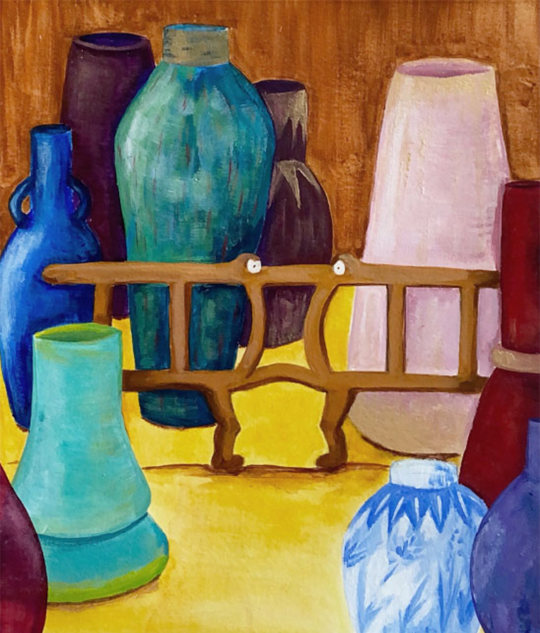
Translates to “He is carrying the ladder horizontally”.
When you say it to a woman you have to say “7amle el sullom bil 3ared”. -il is masculine and -le is feminine.
This means he/she is complicating things.
7- Toqbor Albeh - تقبر قلبي
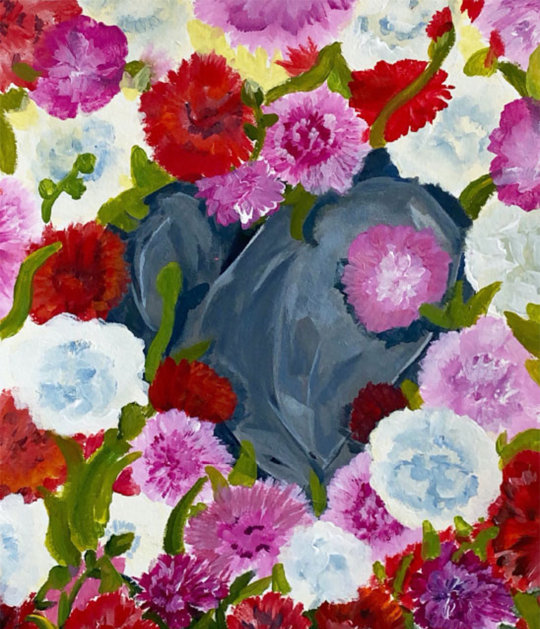
This translates to “Burry my heart”.
Just to let you know no one wants to burry anyone here...
Funny enough despite the dark tone of the expression, it is actually an expression to express one’s love to another. It means that they would rather die than to lose you. It is something I hear my mother say a lot to my siblings and I, so for me this is an expression mostly used by mothers.
A similar expression of love would be Tuqborni*/تقبرني : which translates to “Burry me” .
This also means that they would rather die and have you bury them before losing you.
An expression used instead of saying “I love you so much”.
*I actually hear my grandmothers say it a lot to express her love.
A sweet expression, right?
8- Rou7 Ballit El Ba7er - روح بلّط البحر

This translates to “Go tile the sea”.
Oh! how I love this expression!! I am guilty of using it a lot, especially when talking to my brother.
This is an expression used a lot instead of saying “Leave me alone” or “Get lost”.
9- Fakhar ykassir ba3do - فخار يكسر بعضه
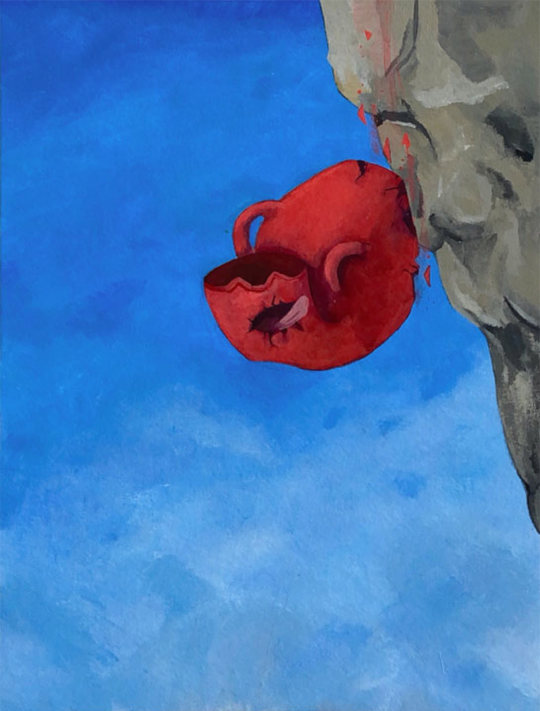
This translates to “Let the pottery brake itself”
This means to let people deal with their own mess, in other words let’s not deal with the problems of others.
10- Re7na Salata - رحنا سلطة

This translates to “We went salad”
Something we say when we’re screwed and there is no going back.
I started this thesis to give you all a look at my culture but in the end, I ended up learning a lot too!
Hope you enjoyed it~
Mia
PS: This might be my longest post.
#Lebanese#Arabic#Lebanese Sayings#funny sayings#Art#illustration#ocadu#thesis#2020-2021#undergraduate#acrylpainting#series#fun#educational#culture#language#arabic language
13 notes
·
View notes
Text
Week 1: Xenolalia
The term xenoglossia comes from the Greek words xenos, “foreign”, and glōssa, “tongue” and means “speaking in a foreign language”. Similarly, xenolalia comes from xenos, “foreign”, and lalia, “speaking”, and also means “speaking in a foreign language”. These terms are often used synonymously, and refer to speaking or writing in a human language that one has not acquired by natural means.
It can also be said that it's the supposedly paranormal phenomenon in which a person is allegedly able to speak, write or understand a foreign language that they could not have acquired by natural means.
As I will continue brainstorming and develop my research process during the course Graphic Design 4 at OCAD University, I will divide my definition and reflection of this word into two concepts:
Cultural Differences
Psychology and Philosophy
Cultural Differences includes topics such as Immigration (a phenomenon in which people from a country or culture move to a foreign environment that usually has a different language, culture, and communication methods) Body Language (a language that no one has defined it and it’s based on improvisation) Signs and Icon Design (a design-based language for everyone with different backgrounds, ages and abilities) Slang Language for people with disabilities (like Braille or Sign Language)
Psychology and Philosophy include topics like Reincarnation (some people are born with the ability to speak and understand a foreign language without any educational background, and many people believe it can be related to reincarnation) Bilingual Afasi (It’s usually the result of severe head trauma or a stroke. The most famous example of this is an Australian guy who woke up after a car accident and had lost all of his English, but his rather rudimentary knowledge of Chinese Mandarin was completely unaffected) Alzheimer's
2 notes
·
View notes
Text

9 notes
·
View notes
Text

🏢🌟 Toronto Uni Architecture Student's 3D Printed Model:
🎨 Vision: 3D printing + laser cutting + frosted glass effect for a unique design showcase. ✨
⚙️ Process: FDM printed white structure, laser-cut acrylic, and frosted film. 💪🌈
🤩 Result: A stunning model that highlights 3D printing, laser cutting, & limitless creativity!
#design#innovation#creativity#3dprinting#lasercut#architecture#architect#university#uoft#universityoftoronto#toronto#3dprint#nextlevel#ocad#ocadu
2 notes
·
View notes
Text
New Material V1.2

April 8 - April 17, 12-5pm Opening reception: Thursday April 10, 6-9pm
Artists: Leyla Azer Ro Dalziel Patrick Etherington Susan MacPhail Eira McIntosh Arantxa Molina Ade Osindero Marcus Tang Jes Thomas Matt Trinh Elise Walton Jingwei Wang Nima Yajam
“Material” is by now a subject that we might consider exhausted - one that has become a cliché in the world of fine art by virtue of its various iterations and afterlives. The recent but often already-tired “new materialist” tendency is arguably further evidence of this fact. One might expect given these circumstances that the artists in this exhibition, in a classical postmodern move that repeatedly rears its head in the face of cultural and artistic disillusionment, would in fact deal with “material” as is used to refer to the cavalier menu of a comedian’s routine.
Yet even a relatively cursory glance at the artists included in this exhibition reveals this is largely not the case. Have we entered a period of post-irony or a “new sincerity” as touted by critics and writers like David Foster Wallace? What avenues of artistic exploration remain open today, particularly as our world more and more appears to entrench itself in the kind of postmodernity first noted decades ago but which only now appears to be reaching its apotheosis? Here we have presented a sample of works by emerging artists in the midst of this cultural ferment who are beginning to articulate these answers.
0 notes
Text






My favourite places to spend time in 2023 as a series of sketches. Ink on paper, October 2023
0 notes
Text
Sustainable Creatives at OCAD U: In conversation with Deanna Gene
Deanna Gene, an OCAD U alumna in Sculpture/Installation and a participant in GradEx, explores sustainability through her project "Self-Inventory." In this interview, she discusses her perspective on sustainability, the use of recycled and natural materials, and the importance of community engagement in addressing plastic waste and environmental justice. Her work emphasizes the balance between human needs and environmental health, advocating for inclusive practices that promote equity and awareness.





Please share your name, pronouns, and program of study at OCAD U.
Deanna Gene (She/Her) Sculpture/Installation
You self-identified your project for the Global Centre for Climate Change (GCCA). How do you personally define sustainability within the context of your work, especially considering your focus on plastic waste and environmental justice? How do you relate this to broader global and political spheres and the role for a global sustainability framework such as the United Nations Sustainable Development Goals (UNSDGs) which highlights the intersections of socio-economic and ecological systems?
On a personal level I believe sustainability is a balance between human needs and the environment. By reducing consumption and eliminating waste, our productive result is efficiency. We can all live and understand by its definition that sustainability means meeting current needs without compromising the ability of future generations to meet their own needs. It focuses on environmental health, social equity, and economic vitality. It also means accessibility. Amidst greenwashing and sustainability guilt, many people feel discouraged from engaging with sustainable practices. They need to embrace their own definition and find balance. For me, it’s not about completely avoiding plastic or exclusively shopping at refill stores. It's about making the best use of what you already have.
Community engagement is also crucial for sustainability to ensure equal access to a clean environment and address disparities in waste management and health outcomes. My project, Self-inventory aligns with global efforts to combat plastic pollution, collaborating internationally, and advocating for stronger waste management regulations. The goal is to educate others on the correlation between sustainability and marginalized communities. To not have to think about sustainability is to come from a place of privilege and frankly, ignorance. I aim to help educate and promote sustainable practices that benefit both people and the planet, and to encourage the creation green jobs and sustainable businesses. An intersectional approach would contribute to global sustainability and equity.
Could you describe the techniques and materials you use to improve environmental impact in your work, particularly in relation to the excess of plastic and recyclable materials, we all create. It also addresses the intersection between people of colour and environment injustice?
To improve the environmental impact of my work, I utilize a cordage process that involves twisting fibres together to create ropes. In my project, "Self-Inventory," I incorporated not only traditional fibres but also items like plastic bags and fabric scraps. This approach addresses the excess plastic and often discarded materials prevalent in our lives.
Soft plastics are a significant component of the cords I make because of how abundant it is in our daily lives. This reality influenced my choice of materials for the cords in my project. Growing up in an Asian household, I was taught to use every part of something, a practice that contrasts with the Western tendency to prioritize appearance over utility.
Environmental injustice is a significant concern, particularly for marginalized communities that bear the brunt of hazardous waste, resource extraction, and other harmful land uses without benefiting from them. The common practice of North America shipping its waste to other countries only worsens this issue. Toronto's recycling system is inadequate, with many people
unaware of how little actually gets recycled. Worse, many people don't bother to recycle or do so incorrectly. As an artist, I strive to create without contributing to this cycle of waste and harm.
What significant challenges did you encounter to create work that considers sustainability in materials, especially considering the themes you explored? How did you address this?
When working with recycled or natural materials, I faced significant challenges due to the lack of convenience and control these materials offer compared to toxic materials. Sourcing plastic and other non-sustainable materials was straightforward because they are readily available in everyday life. However, using natural materials posed more difficulties. I had to meticulously plan to ensure I had enough foraged fibres before winter. This required careful measures to avoid over-foraging from one area, preventing the spread of invasive plants, and minimizing disturbances to natural habitats. Once gathered, these materials needed thorough preparation.
Additionally, the inability to forage during winter presented a challenge. I addressed this by incorporating materials such as banana skins and lotus leaves, which are not only natural and sustainable but also culturally significant to me. These materials allowed me to integrate an essential element of my culture into my work…food.
By adopting these strategies, I successfully overcame the challenges of creating sustainable work, ensuring that my materials and methods aligned with the themes of environmental responsibility and cultural significance.
How do you envision the role of art and design evolving in promoting sustainability in the future, particularly within the contexts you address?
I envision art and design playing a crucial role in promoting sustainability by integrating traditional cultural practices and emphasizing the use of natural materials. Historically, many cultural art practices involved slow creation processes using materials sourced from the surrounding land, which inherently promoted sustainability.
In traditional art institutions such as galleries, theatres, and museums, there often exists an imbalance between cultural representation and sustainability. My hope is to see these institutions embrace and incorporate cultural art practices that emphasize sustainable methods. This could involve showcasing works that utilize materials like natural pigments instead of synthetic ones, or bio-plastics in place of vinyl. These practices not only reduce the environmental impact but also honour the traditional methods of creating art. By adopting such sustainable practices, art and design can lead by example, demonstrating how cultural heritage and environmental responsibility can coexist. This evolution will foster a deeper connection between people and the environment, encouraging a more sustainable future in the arts.
What advice would you offer to emerging artists and designers who are interested in adopting sustainable practices?
For emerging artists and designers looking to adopt sustainable practices, it's crucial to consider the entire lifecycle of your work. Ask yourself, “Where will this work go after the exhibition?” This perspective helps me guide more sustainable choices from the beginning, ensuring minimal environmental impact even after the display period ends.
Choosing materials thoughtfully is another key aspect. Reflect on what the materials inherently convey about your piece. Sustainable materials not only promote environmental consciousness but also add unique properties and histories to your work, enriching its meaning. The process of using these materials is often more rewarding and can be more economical, as sourcing local or repurposed materials can significantly reduce costs.
Embracing sustainable practices involves reflecting on the broader impact of your work. Your choices contribute to a larger movement toward environmental stewardship and cultural preservation, inspiring others in the art and design community. Don’t hesitate to experiment with unconventional materials and techniques. Sustainable practices often push you to think creatively, leading to unique and innovative work that stands out.
Thank you, Deanna, for sharing your insights on sustainability and inspiring us to rethink our approach to art and materials! You can explore more of Deanna's work on her Instagram @dgene.art
Learn more about sustainability at OCAD U: www.ocadu.ca/sustainability
0 notes
Text

i had a dream last night, and you were in it, and it took me the whole day to get over it.
49 notes
·
View notes
Text

I am giving a 3hr talk and workshop on Saturday afternoon at @ocadu and it is all about Generative Art vs AI and how artists can build their own tools.
If you are in Toronto please come and join us. The presentation will also be livestreamed.
You can find more information here:
conference.digiart.ca
1 note
·
View note
Text
A little throwback to #OCAD #TO 2023 grad show from May! There are always so many talented artists! 🌷🪻
0 notes
Text
Week 2











For this project, I will be using photography to depict the base images, generate images that might be hard to get, and collage/assemble them for the final work. Along with printmaking and scan art for typography. I will be exploring different papers as the materials for the final submission, along with any other related materials that I find interesting and printable.
Week 1-2:
My current process contains typography of the word Xenolalia in different languages. Then, I print each word on a separate sheet and use a scanner to deform them. This way, the typographies will have an abstract and non-familiar form that can relate to the meaning of Xenolalia, which is foreign and unfamiliar. A material I’m using is transparent paper to print these abstract typographies on them so as they are placed on top of each other, they create a form of strange and chaotic text which has no meaning at first, but when you go through each page, you might find at least one language that’s familiar.
1 note
·
View note
Text


Life Sculpture (2023), clay
1 note
·
View note
